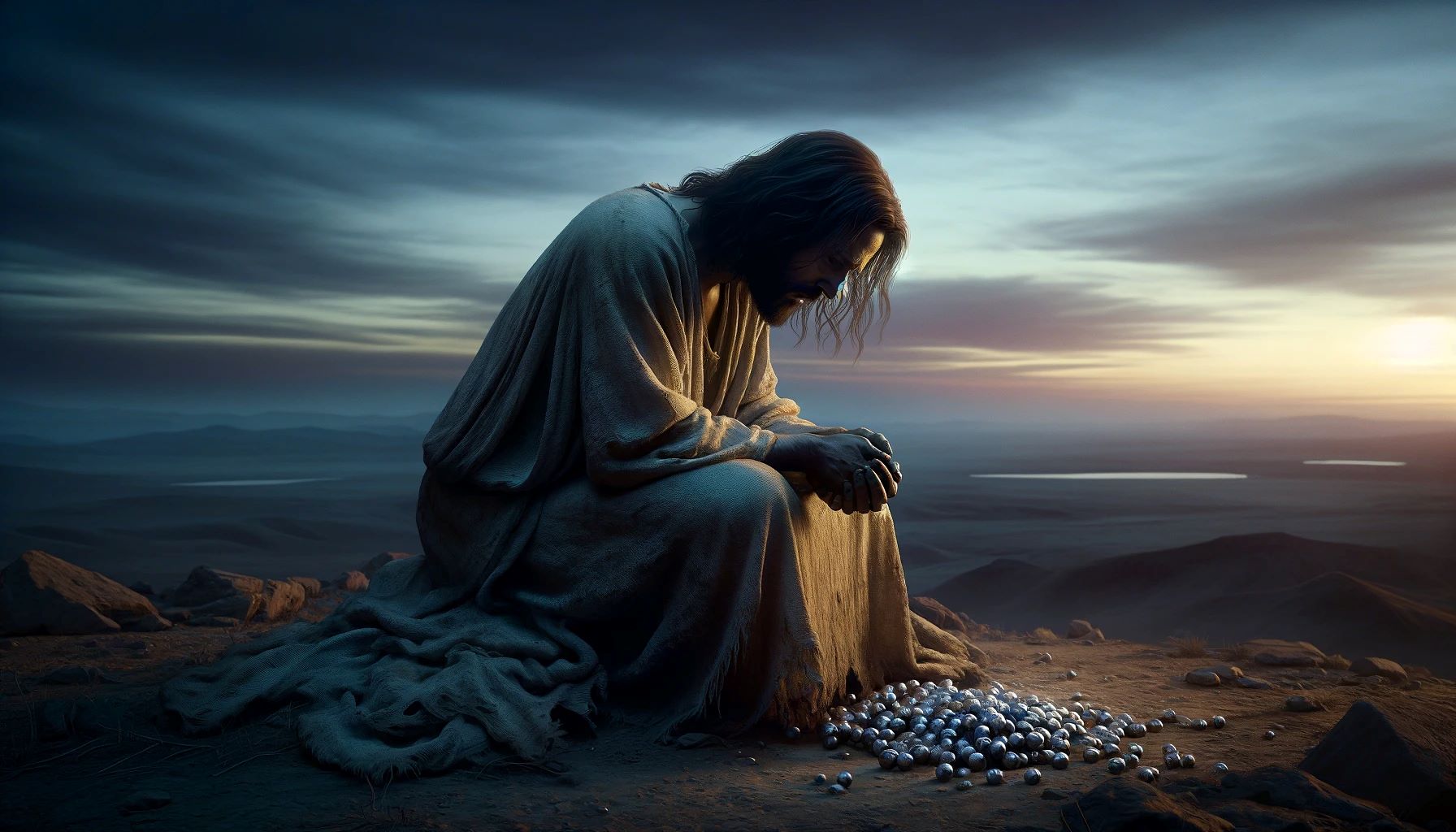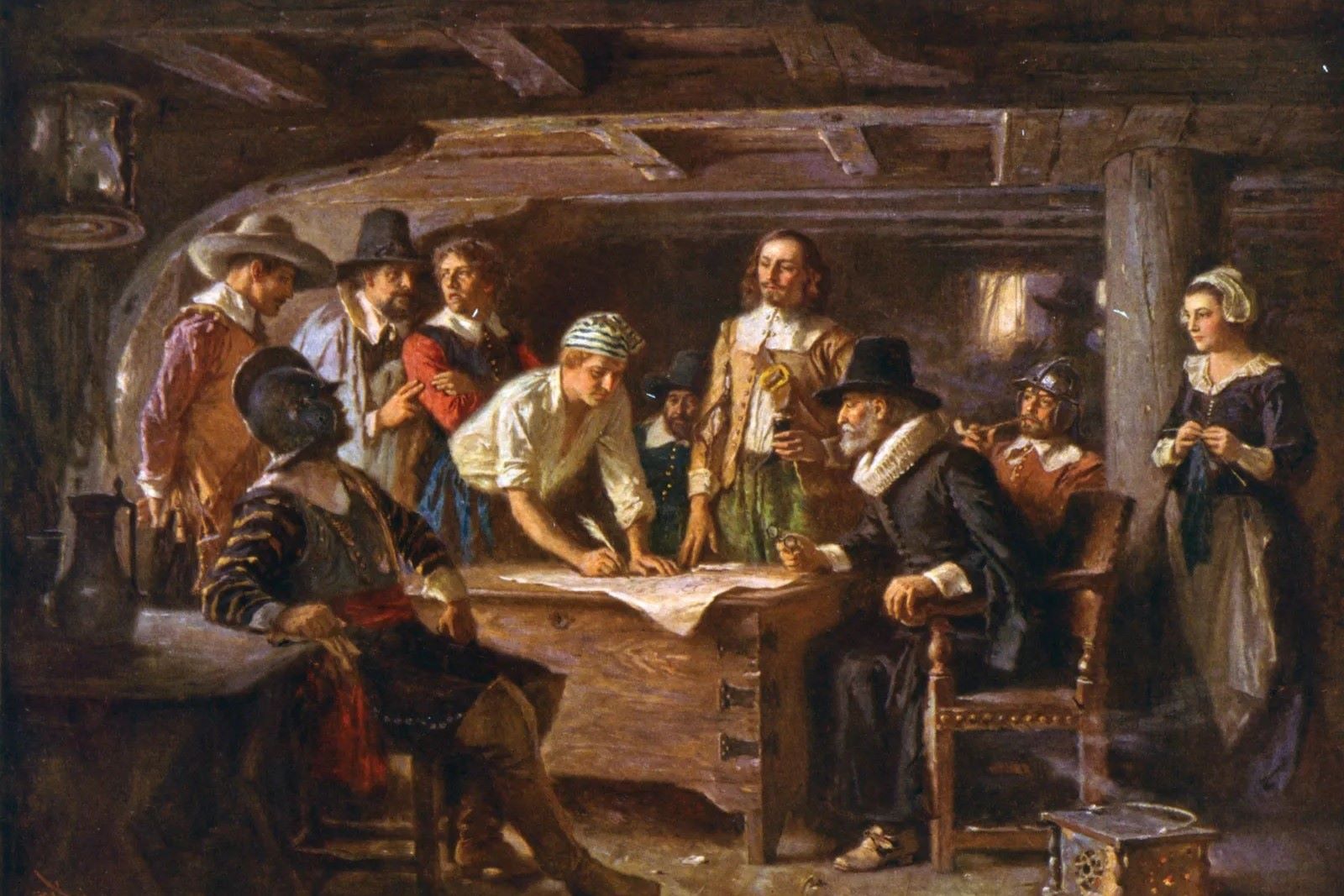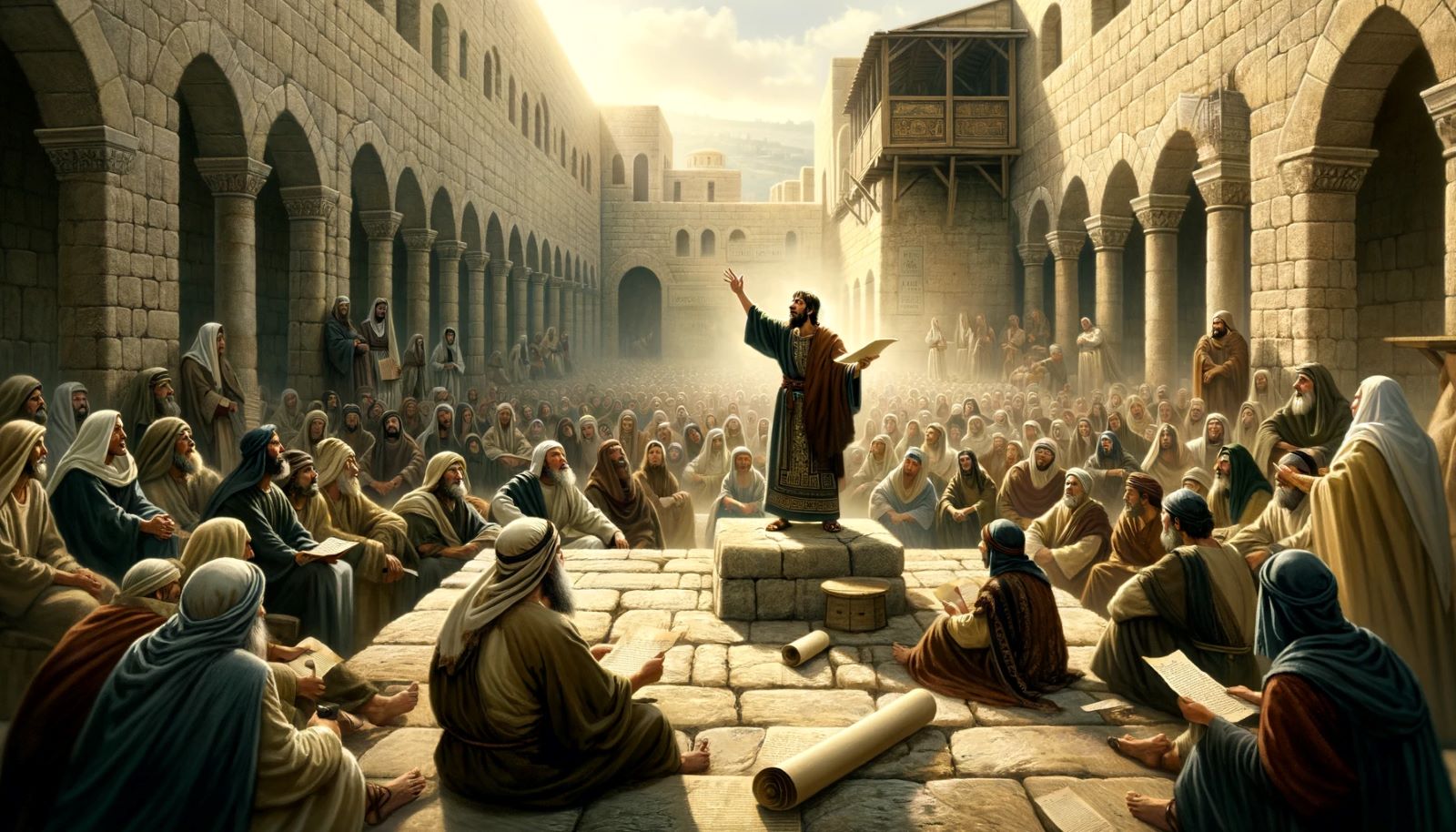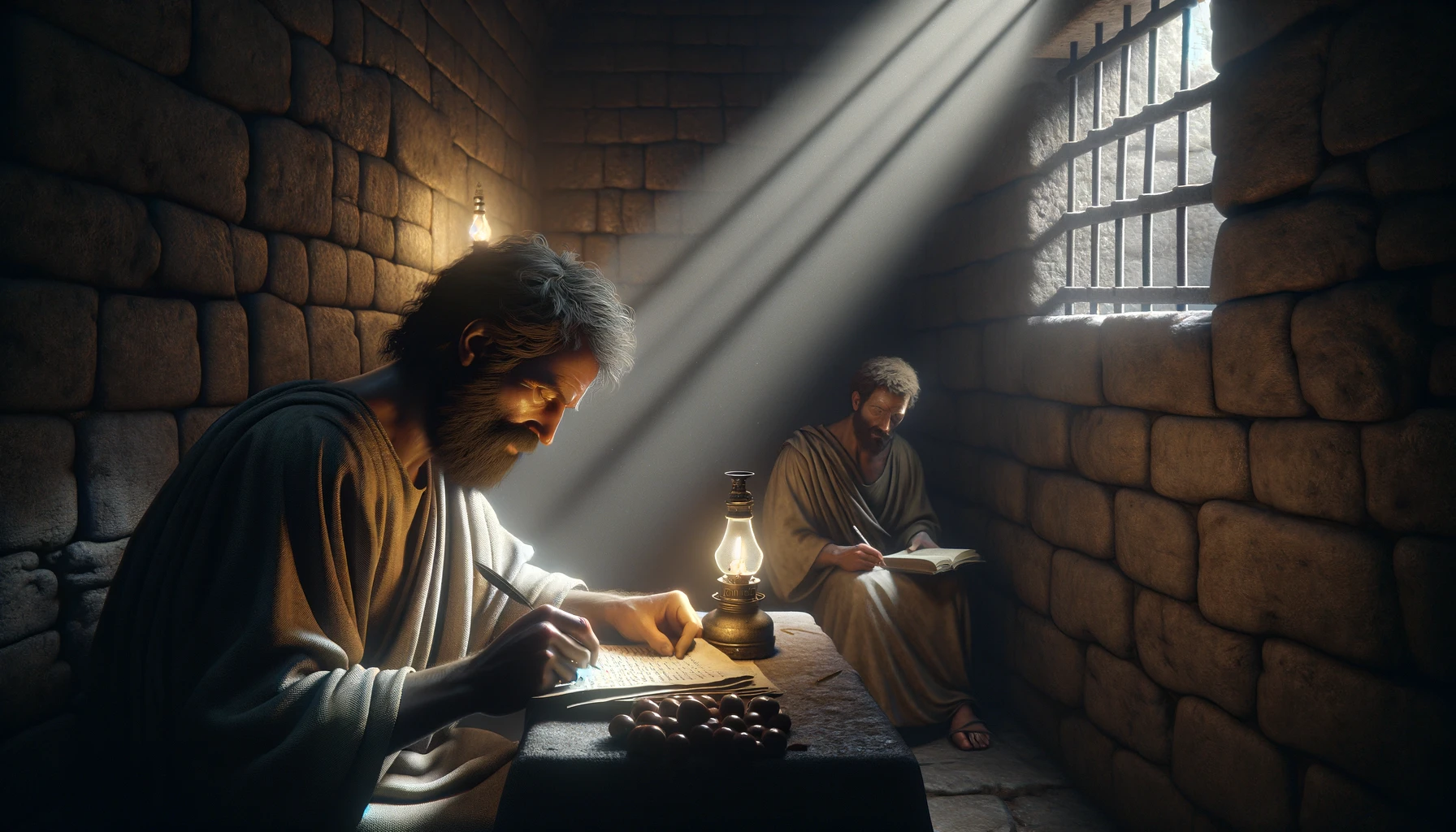Home>Bible Facts>Which Apostles First Saw The Empty Tomb
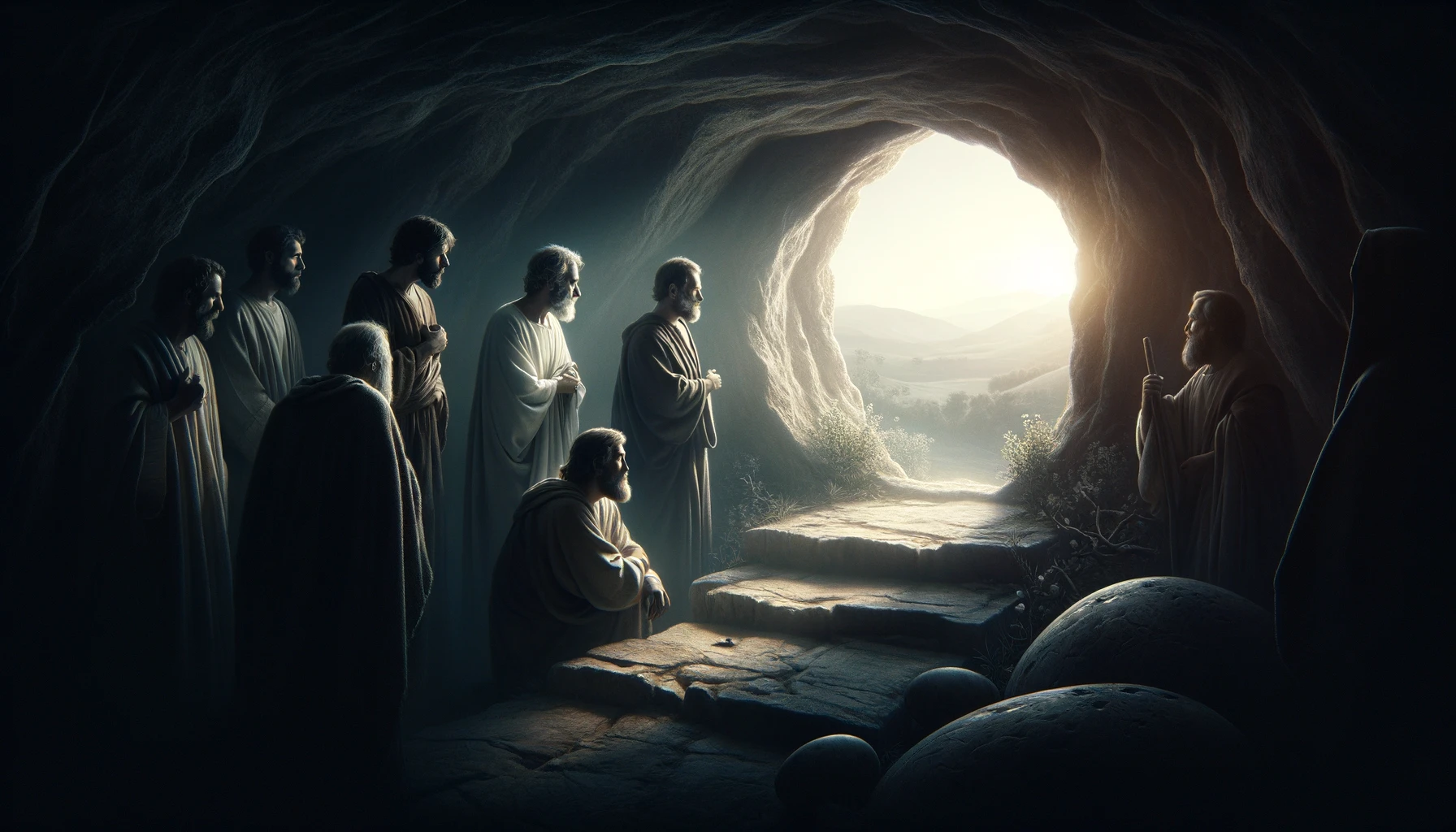

Bible Facts
Which Apostles First Saw The Empty Tomb
Published: February 22, 2024
Jason DeRose, Managing Editor at Christian.net, uses his expertise in religion and journalism to deepen understanding of faith's societal impacts. His editorial leadership, coupled with a strong academic background, enriches the platform’s diverse content, earning him recognition in both journalism and religious circles.
Discover fascinating Bible facts about which apostles first saw the empty tomb. Uncover the truth and deepen your understanding of the biblical narrative.
(Many of the links in this article redirect to a specific reviewed product. Your purchase of these products through affiliate links helps to generate commission for Christian.net, at no extra cost. Learn more)
Table of Contents
Introduction
The empty tomb is a pivotal event in the biblical narrative, symbolizing the resurrection of Jesus Christ. It is a moment of profound significance, marking the culmination of Jesus' earthly ministry and the fulfillment of the promise of salvation. The accounts of the empty tomb are found in the four Gospels of the New Testament, each providing unique perspectives and details surrounding this extraordinary occurrence.
The narratives of the empty tomb are not only foundational to the Christian faith but also serve as a testament to the unwavering devotion of those who were present at the time. The events that transpired following the crucifixion of Jesus are a testament to the unwavering devotion of those who were present at the time. The Gospels offer a glimpse into the emotions, reactions, and experiences of the individuals who first encountered the empty tomb, shedding light on their profound sense of awe, confusion, and ultimately, faith.
As we delve into the accounts of the empty tomb, we are invited to embark on a journey back in time, to witness the profound impact of this miraculous event on the lives of those who bore witness to it. Through the eyes of the apostles and the women who visited the tomb, we gain insight into the transformative power of the resurrection and the enduring hope it continues to instill in the hearts of believers today.
Read more: Who Was The First Martyr Of The Apostles
The Gospel Accounts of the Empty Tomb
The Gospel accounts of the empty tomb, as chronicled in the New Testament, provide a profound and multifaceted portrayal of the pivotal event that marked the resurrection of Jesus Christ. Each Gospel—Matthew, Mark, Luke, and John—offers a unique perspective, contributing to a comprehensive understanding of the empty tomb and its significance.
Matthew's Gospel presents a vivid depiction of the discovery of the empty tomb by Mary Magdalene and the other Mary. It describes a great earthquake as an angel of the Lord descends from heaven, rolls back the stone, and sits upon it. The angel reassures the women, proclaiming that Jesus has risen and instructing them to inform the disciples. This account underscores the divine intervention and the angelic proclamation that heralded the resurrection.
Mark's Gospel portrays the women, including Mary Magdalene, Mary the mother of James, and Salome, as they journey to the tomb to anoint Jesus' body. Upon arriving, they encounter a young man dressed in a white robe, who informs them of Jesus' resurrection. The women are instructed to relay this news to the disciples, yet they initially respond with fear and amazement. Mark's account emphasizes the astonishment and trepidation that accompanied the revelation of the empty tomb.
Luke's Gospel provides a detailed narrative of the women, including Mary Magdalene, Joanna, and Mary the mother of James, as they visit the tomb and encounter two men in dazzling apparel. The men remind the women of Jesus' prophecy regarding His resurrection and prompt them to share the news with the disciples. Luke's account highlights the fulfillment of Jesus' words and the role of the women as bearers of the momentous tidings.
John's Gospel focuses on Mary Magdalene's visit to the tomb, where she discovers the stone removed and the tomb empty. Distraught, she informs Peter and John, who hasten to the tomb and find the linen cloths but no trace of Jesus. This account underscores the emotional turmoil and bewilderment experienced by the disciples upon encountering the empty tomb.
The Gospel accounts of the empty tomb collectively offer a rich tapestry of perspectives, emotions, and divine interventions, underscoring the profound impact of the resurrection on those who first bore witness to this extraordinary event. These narratives continue to inspire and resonate with believers, affirming the enduring significance of the empty tomb in the Christian faith.
Peter and John
In the Gospel of John, the account of the empty tomb unfolds with a sense of urgency and profound emotional resonance as Mary Magdalene, a devoted follower of Jesus, makes a startling discovery. Upon arriving at the tomb and finding the stone removed, Mary hastens to inform Peter and John, two of Jesus' closest disciples, of this perplexing development. The sense of urgency and bewilderment is palpable as Peter and John, upon hearing Mary's report, embark on a swift journey to the tomb to ascertain the veracity of her claims.
The narrative unfolds with vivid detail, capturing the fervor and determination that propel Peter and John to the site of the empty tomb. John, the beloved disciple, outruns Peter and reaches the tomb first. However, he pauses at the entrance, allowing Peter to catch up, and together they enter the sepulcher. What they encounter within the tomb leaves an indelible impression on their hearts and minds. They behold the linen cloths that had enshrouded Jesus' body, lying in a state of undisturbed repose, and the cloth that had covered His head neatly folded and placed apart.
The scene within the tomb evokes a profound sense of awe and wonder, mingled with a burgeoning realization of the miraculous nature of Jesus' resurrection. John, in his Gospel account, emphasizes the impact of this moment, noting that upon witnessing the evidence within the tomb, he himself believed. This pivotal revelation underscores the transformative power of encountering the empty tomb, as it engenders a deepening of faith and understanding among the disciples.
The account of Peter and John at the empty tomb serves as a poignant testament to the profound impact of the resurrection on those who were intimately connected to Jesus' ministry. Their journey to the tomb, marked by urgency and determination, culminates in a transformative encounter that solidifies their belief in the resurrection. This narrative not only underscores the emotional and spiritual significance of the empty tomb but also highlights the unwavering devotion and steadfast faith of the disciples in the face of profound uncertainty and divine revelation.
The account of Peter and John at the empty tomb stands as a testament to the enduring impact of the resurrection, inspiring believers to embrace the transformative power of faith and to approach the empty tomb with a sense of awe, reverence, and unwavering conviction.
Mary Magdalene
In the Gospel accounts of the empty tomb, Mary Magdalene emerges as a central figure, embodying unwavering devotion and profound emotional depth. Her journey to the tomb encapsulates a poignant blend of sorrow, determination, and ultimately, transformative encounter. Mary Magdalene's steadfast commitment to Jesus is palpable as she embarks on a poignant pilgrimage to the sepulcher, driven by a deep-seated love and reverence for her beloved teacher and savior.
As depicted in the Gospel of John, Mary Magdalene arrives at the tomb in the early hours of the morning, her heart heavy with grief and her mind undoubtedly fraught with the harrowing events of Jesus' crucifixion. The sight that greets her—a stone removed from the entrance of the tomb—instigates a tumult of emotions, ranging from perplexity to apprehension. Her immediate response is to hasten to Peter and John, the stalwart disciples of Jesus, to apprise them of this disquieting development.
Returning to the tomb, Mary Magdalene stands on the threshold of a profound and transformative encounter. As she peers into the sepulcher, she is met with a vision that defies all earthly logic—the absence of Jesus' body. Her initial reaction is one of distress and disbelief, as she grapples with the inexplicable emptiness of the tomb. This poignant moment encapsulates the raw, unfiltered emotions of a devoted follower confronted with the enigma of the empty tomb.
In the midst of her anguish, Mary Magdalene encounters a figure whom she initially mistakes for the gardener. It is in this tender exchange that the pivotal revelation unfolds—the figure is none other than Jesus, resurrected and radiant with divine glory. The profound impact of this encounter transcends the bounds of human comprehension, as Mary Magdalene is enveloped in a wave of awe, reverence, and ineffable joy. Her devotion is rewarded with the ineffable privilege of being the first to witness the risen Christ, a testament to her unwavering faith and profound connection to the heart of Jesus' ministry.
Mary Magdalene's encounter at the empty tomb stands as a testament to the transformative power of the resurrection, encapsulating the profound emotional journey from sorrow and perplexity to unbridled joy and unwavering faith. Her pivotal role in the narrative of the empty tomb underscores the enduring significance of her devotion and the profound impact of her encounter with the risen Christ. Through her steadfast love and unwavering commitment, Mary Magdalene embodies the timeless message of hope and redemption that emanates from the empty tomb, inspiring believers to embrace the transformative power of faith and to approach the resurrection with a sense of awe, reverence, and unwavering conviction.
The Other Women
In the Gospel accounts of the empty tomb, the presence of additional women beyond Mary Magdalene underscores the collective impact of their witness to the resurrection. These women, including Mary the mother of James, Salome, Joanna, and others, embarked on a poignant pilgrimage to the sepulcher, driven by a shared devotion to Jesus and a profound sense of duty. Their journey to the tomb unfolds as a testament to their unwavering commitment and their pivotal role in bearing witness to the transformative event of the empty tomb.
As depicted in the Gospel narratives, the women arrive at the tomb with a common purpose—to anoint the body of Jesus. Their hearts are heavy with grief, yet their resolve remains unshaken as they press forward in their mission. The sight that greets them—a stone rolled away from the entrance of the tomb—elicits a range of emotions, from perplexity to apprehension. Their immediate response is one of deep concern, as they grapple with the inexplicable emptiness of the sepulcher.
The women's encounter with angelic beings at the tomb further amplifies the profound nature of their experience. In the Gospel of Luke, they are greeted by two men in dazzling apparel, who deliver the momentous tidings of Jesus' resurrection. This divine encounter serves as a catalyst for the women's pivotal role as bearers of the extraordinary news, compelling them to share the miraculous revelation with the disciples.
Their journey to the tomb and the subsequent encounter with the angelic messengers encapsulate a profound sense of awe, reverence, and unwavering faith. The women's collective witness to the empty tomb stands as a testament to their integral role in the narrative of the resurrection, underscoring the enduring significance of their devotion and unwavering commitment. Through their steadfast love and resolute faith, these women embody the timeless message of hope and redemption that emanates from the empty tomb, inspiring believers to embrace the transformative power of faith and to approach the resurrection with a sense of awe, reverence, and unwavering conviction.
The women's presence at the empty tomb serves as a poignant reminder of the collective impact of their witness, amplifying the profound significance of the resurrection and affirming the enduring legacy of their unwavering devotion. Their pivotal role in the narrative of the empty tomb continues to inspire and resonate with believers, underscoring the timeless message of hope and redemption that emanates from the resurrection of Jesus Christ.
Read more: Which Apostles Started Churches
Conclusion
The accounts of the empty tomb in the Gospels of the New Testament offer a profound and multifaceted portrayal of the pivotal event that marked the resurrection of Jesus Christ. Through the eyes of the apostles and the women who first encountered the empty tomb, we gain insight into the transformative power of the resurrection and the enduring hope it continues to instill in the hearts of believers today.
The narratives of the empty tomb are not only foundational to the Christian faith but also serve as a testament to the unwavering devotion of those who were present at the time. The events that transpired following the crucifixion of Jesus are a testament to the unwavering devotion of those who were present at the time. The Gospels offer a glimpse into the emotions, reactions, and experiences of the individuals who first encountered the empty tomb, shedding light on their profound sense of awe, confusion, and ultimately, faith.
The account of Peter and John at the empty tomb stands as a testament to the enduring impact of the resurrection, inspiring believers to embrace the transformative power of faith and to approach the empty tomb with a sense of awe, reverence, and unwavering conviction. Their journey to the tomb, marked by urgency and determination, culminates in a transformative encounter that solidifies their belief in the resurrection. This narrative not only underscores the emotional and spiritual significance of the empty tomb but also highlights the unwavering devotion and steadfast faith of the disciples in the face of profound uncertainty and divine revelation.
Mary Magdalene's encounter at the empty tomb stands as a testament to the transformative power of the resurrection, encapsulating the profound emotional journey from sorrow and perplexity to unbridled joy and unwavering faith. Her pivotal role in the narrative of the empty tomb underscores the enduring significance of her devotion and the profound impact of her encounter with the risen Christ. Through her steadfast love and unwavering commitment, Mary Magdalene embodies the timeless message of hope and redemption that emanates from the empty tomb, inspiring believers to embrace the transformative power of faith and to approach the resurrection with a sense of awe, reverence, and unwavering conviction.
The women's presence at the empty tomb serves as a poignant reminder of the collective impact of their witness, amplifying the profound significance of the resurrection and affirming the enduring legacy of their unwavering devotion. Their pivotal role in the narrative of the empty tomb continues to inspire and resonate with believers, underscoring the timeless message of hope and redemption that emanates from the resurrection of Jesus Christ.
In conclusion, the accounts of the empty tomb in the Gospels offer a profound testament to the transformative power of the resurrection, underscoring the enduring impact of unwavering faith, devotion, and the profound hope that emanates from the miraculous event. The narratives of the empty tomb continue to inspire and resonate with believers, affirming the timeless message of hope and redemption that emanates from the resurrection of Jesus Christ.


